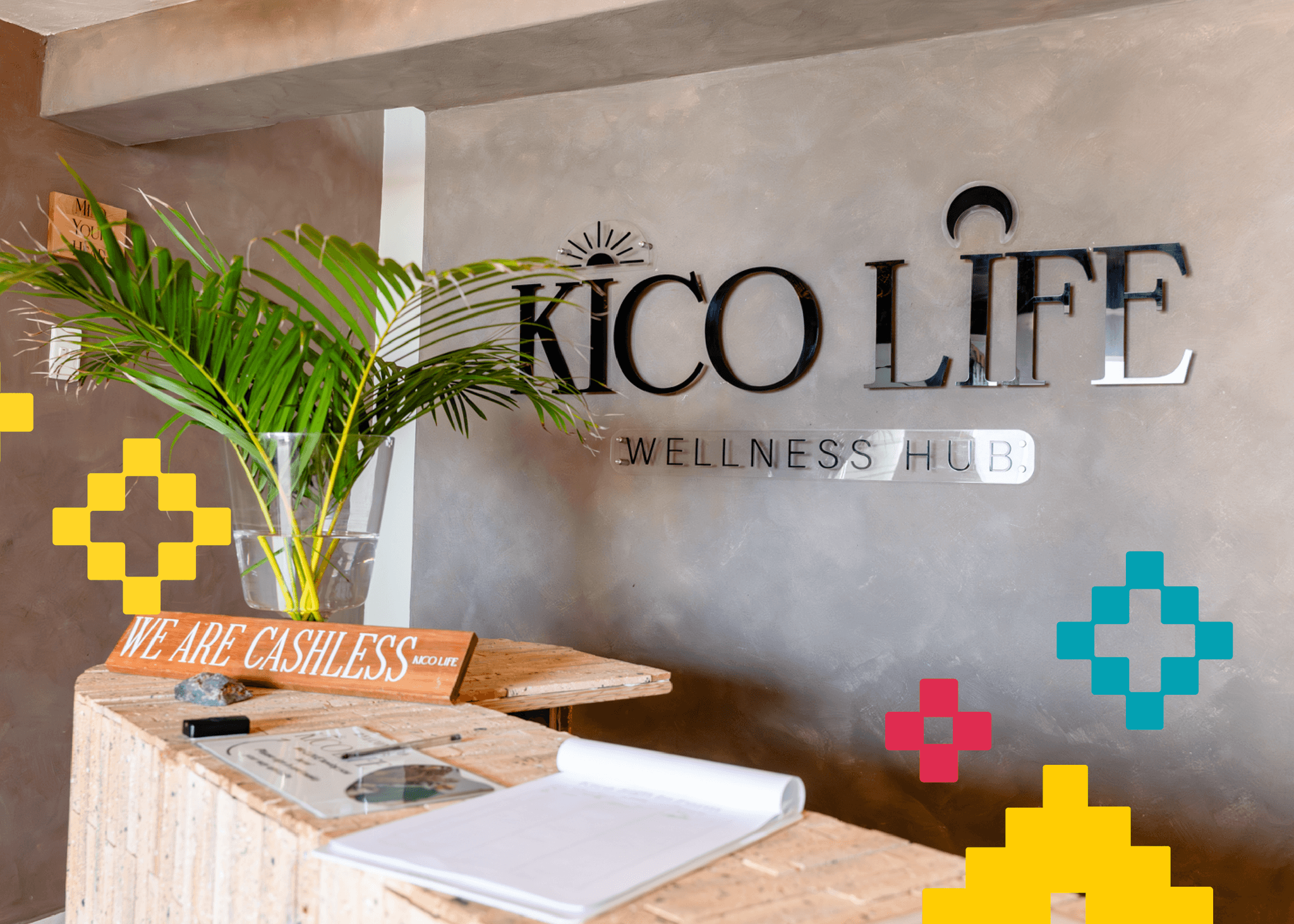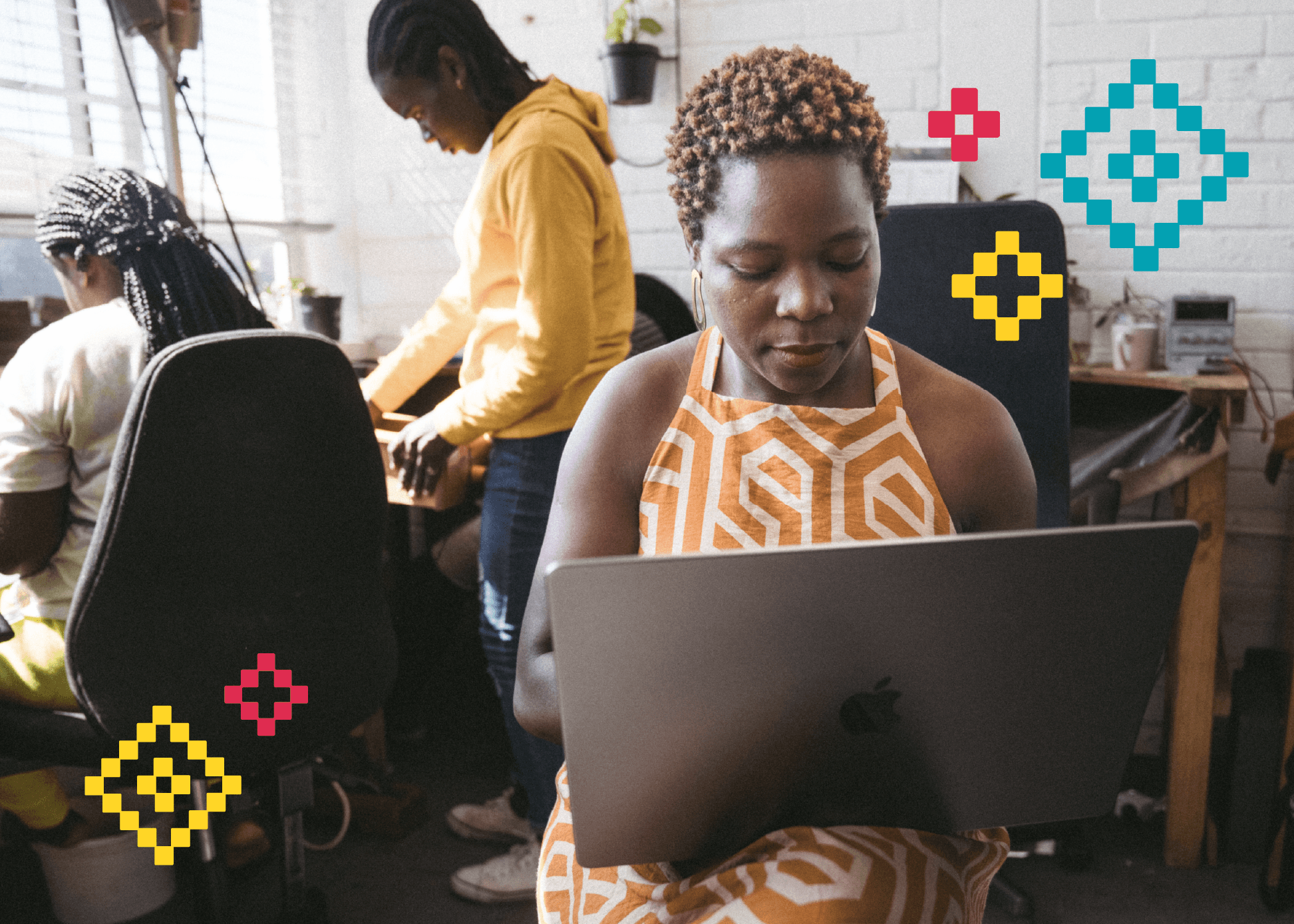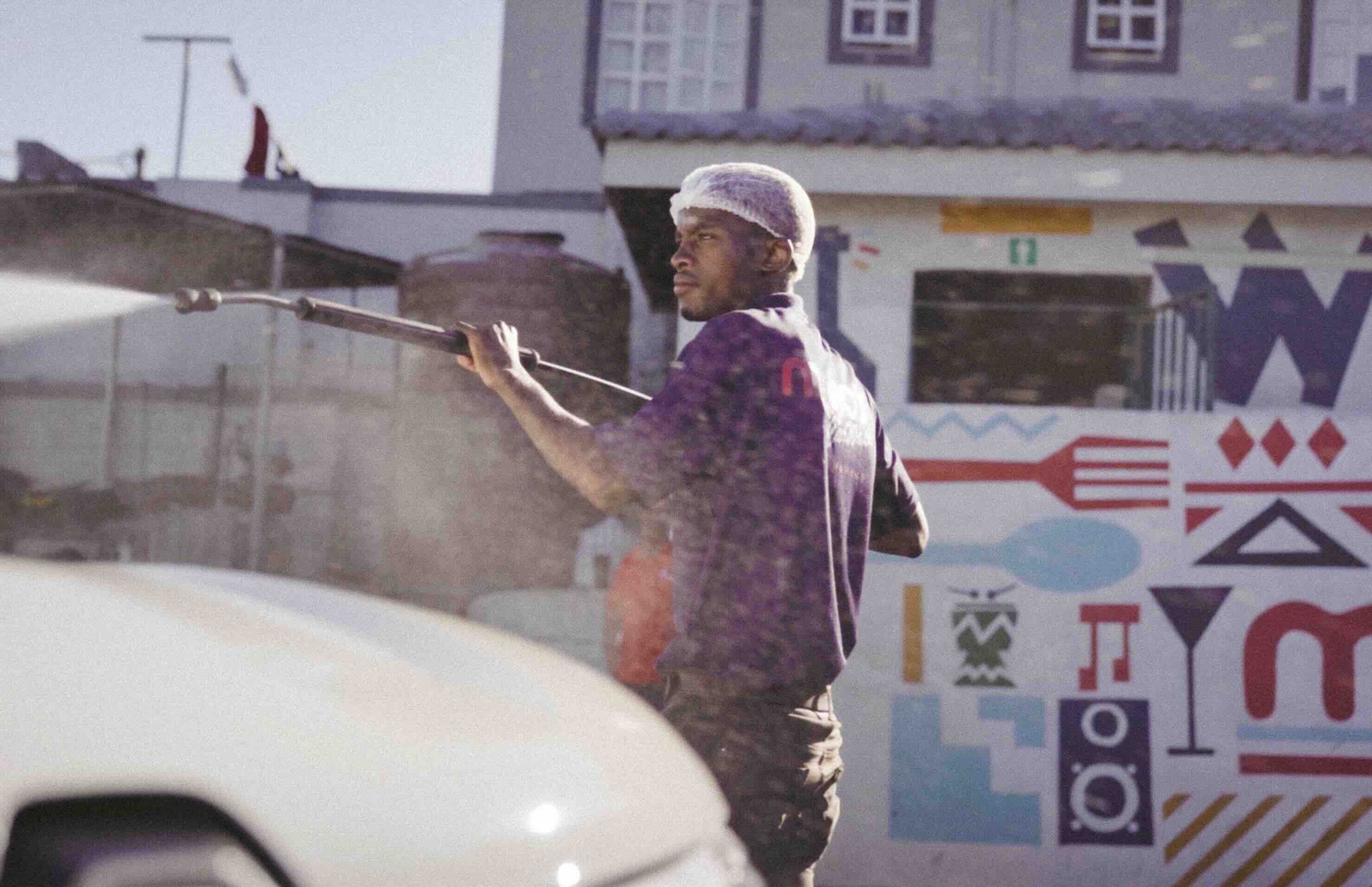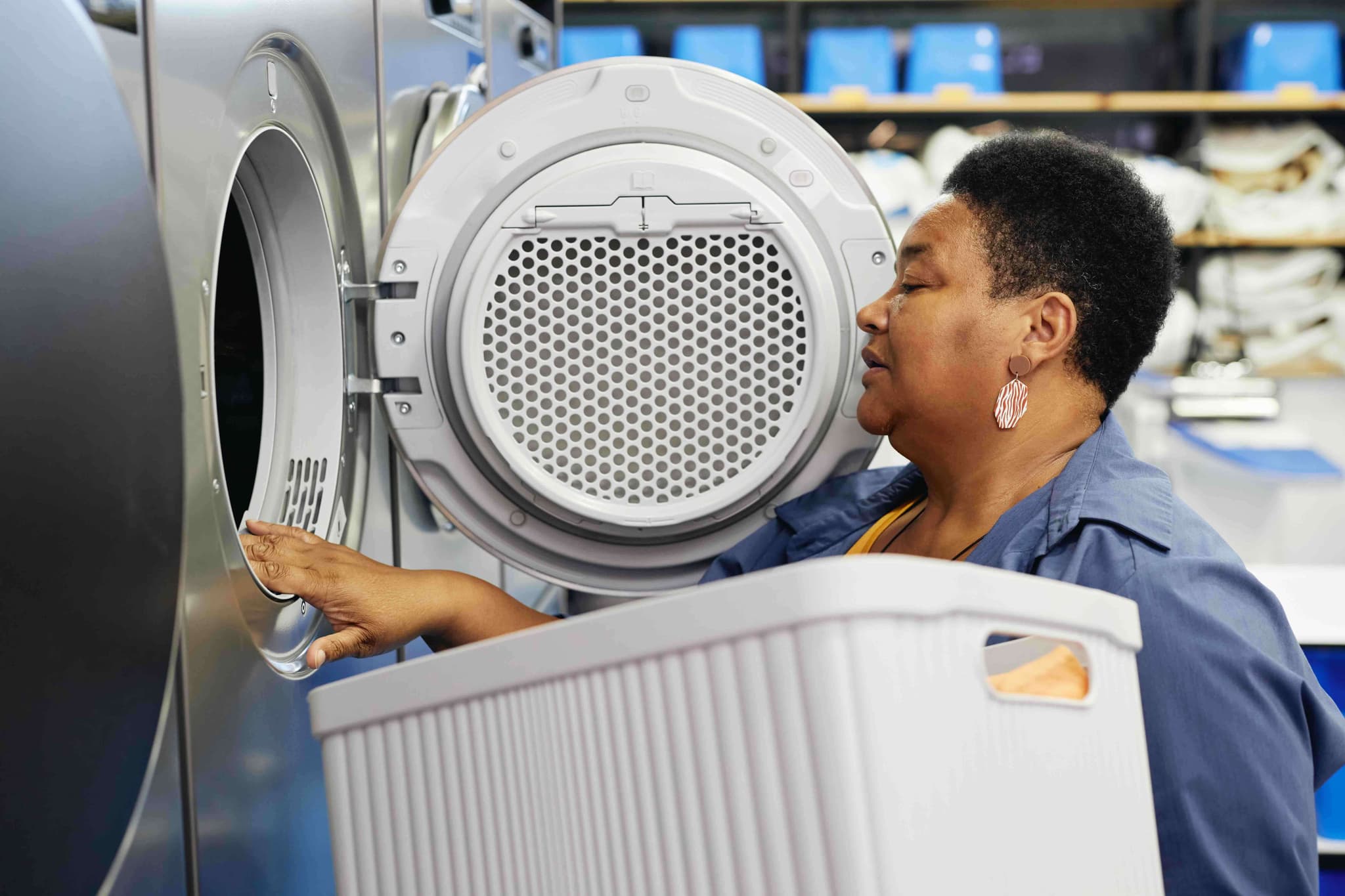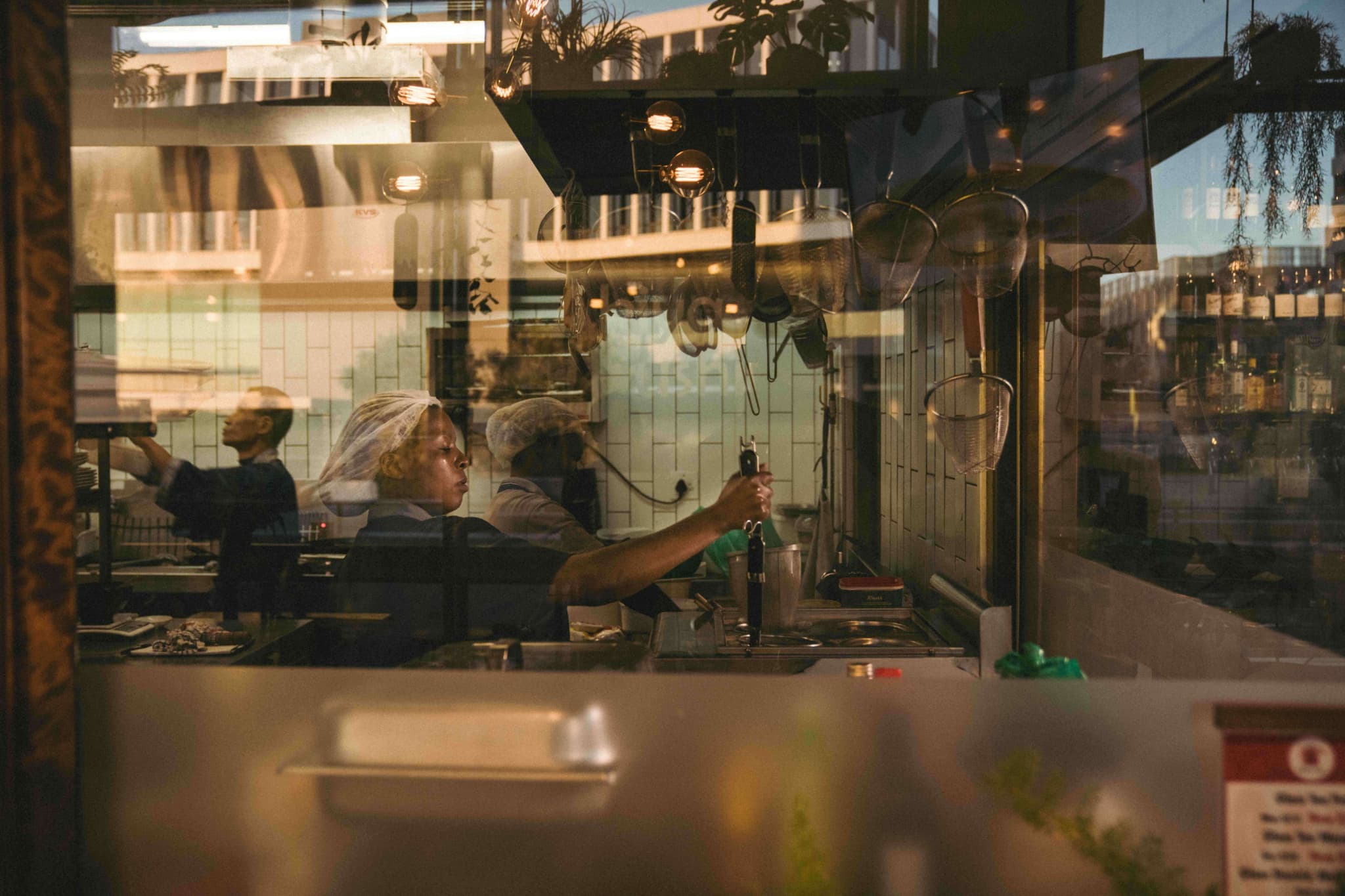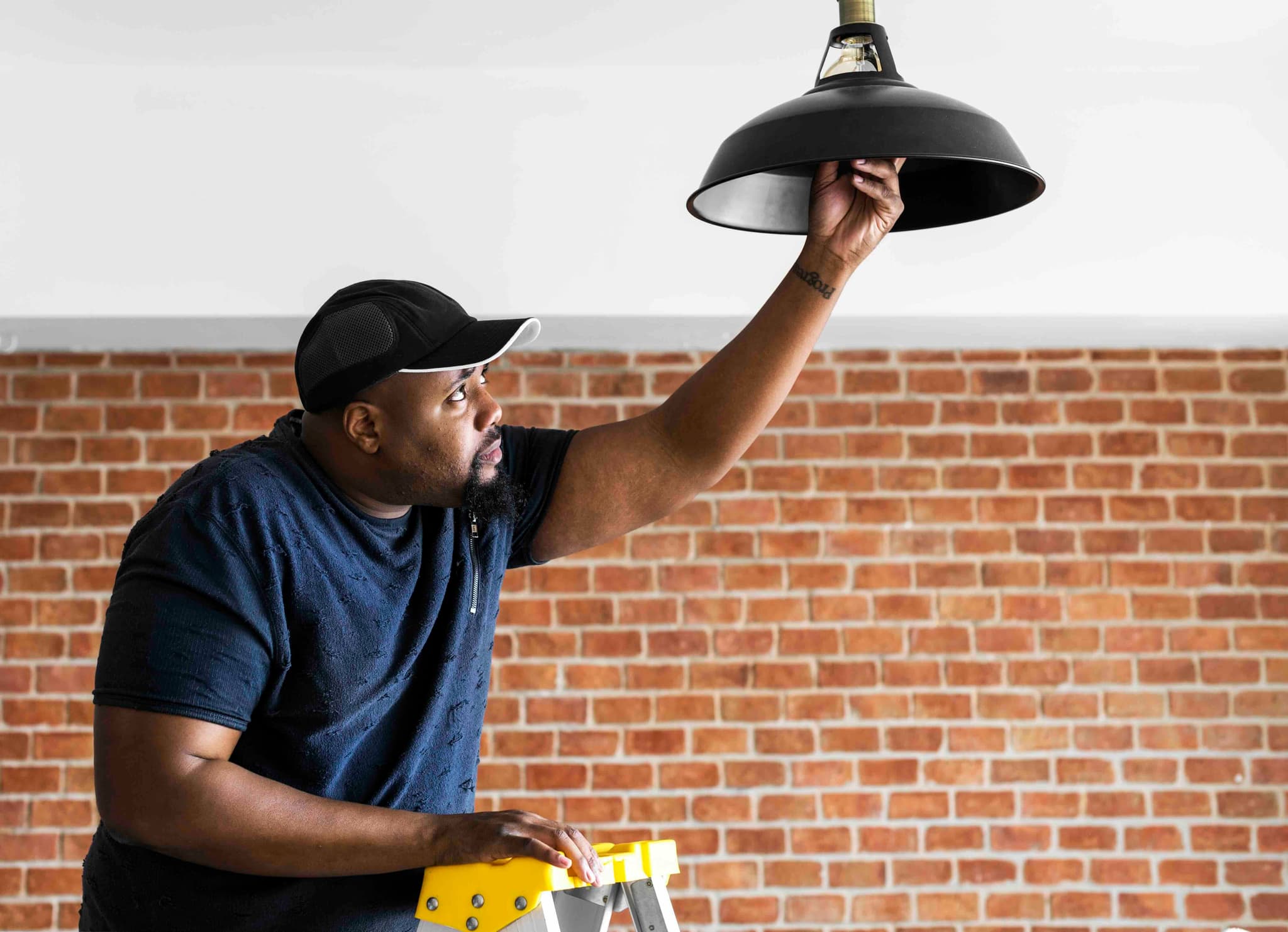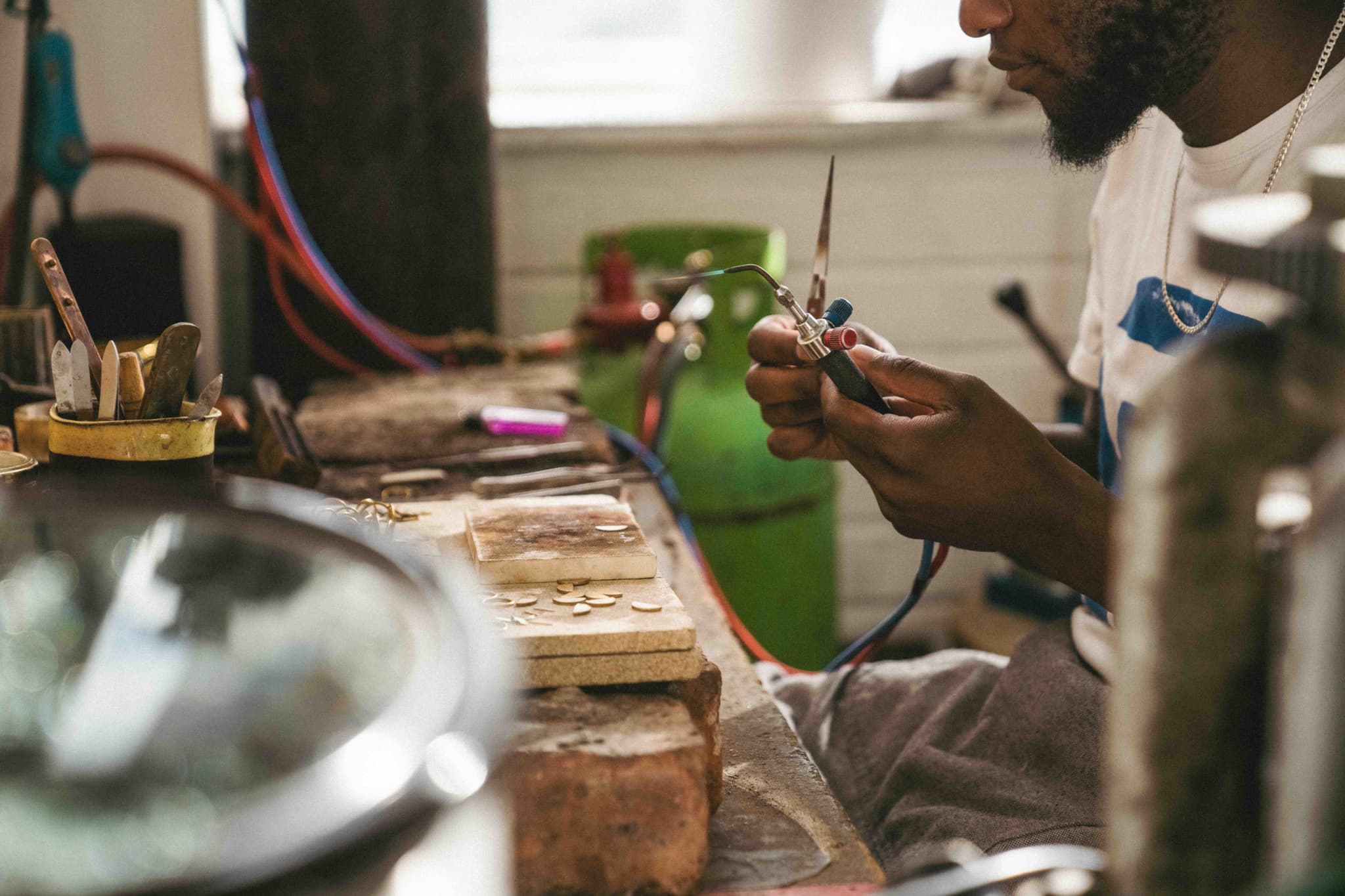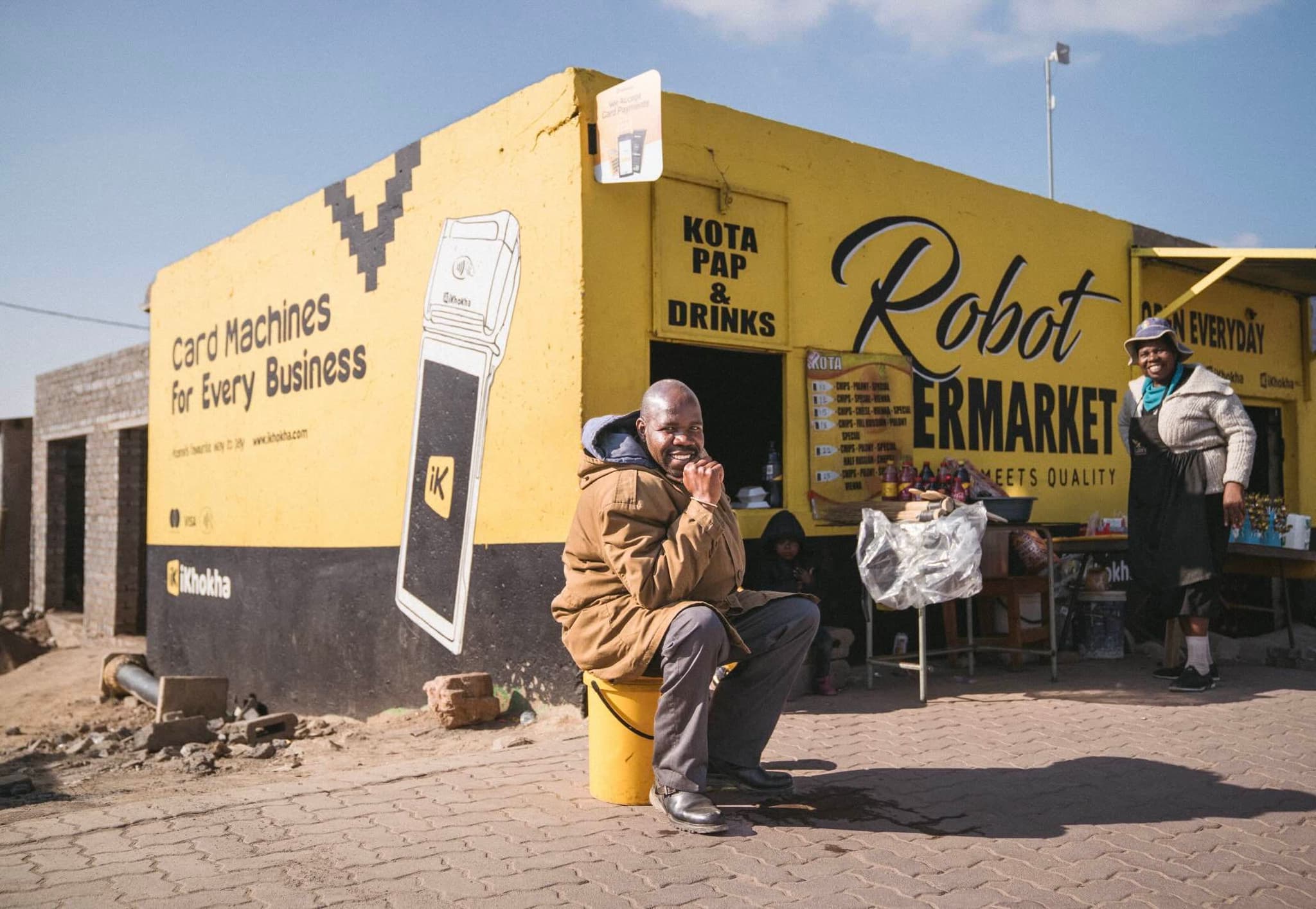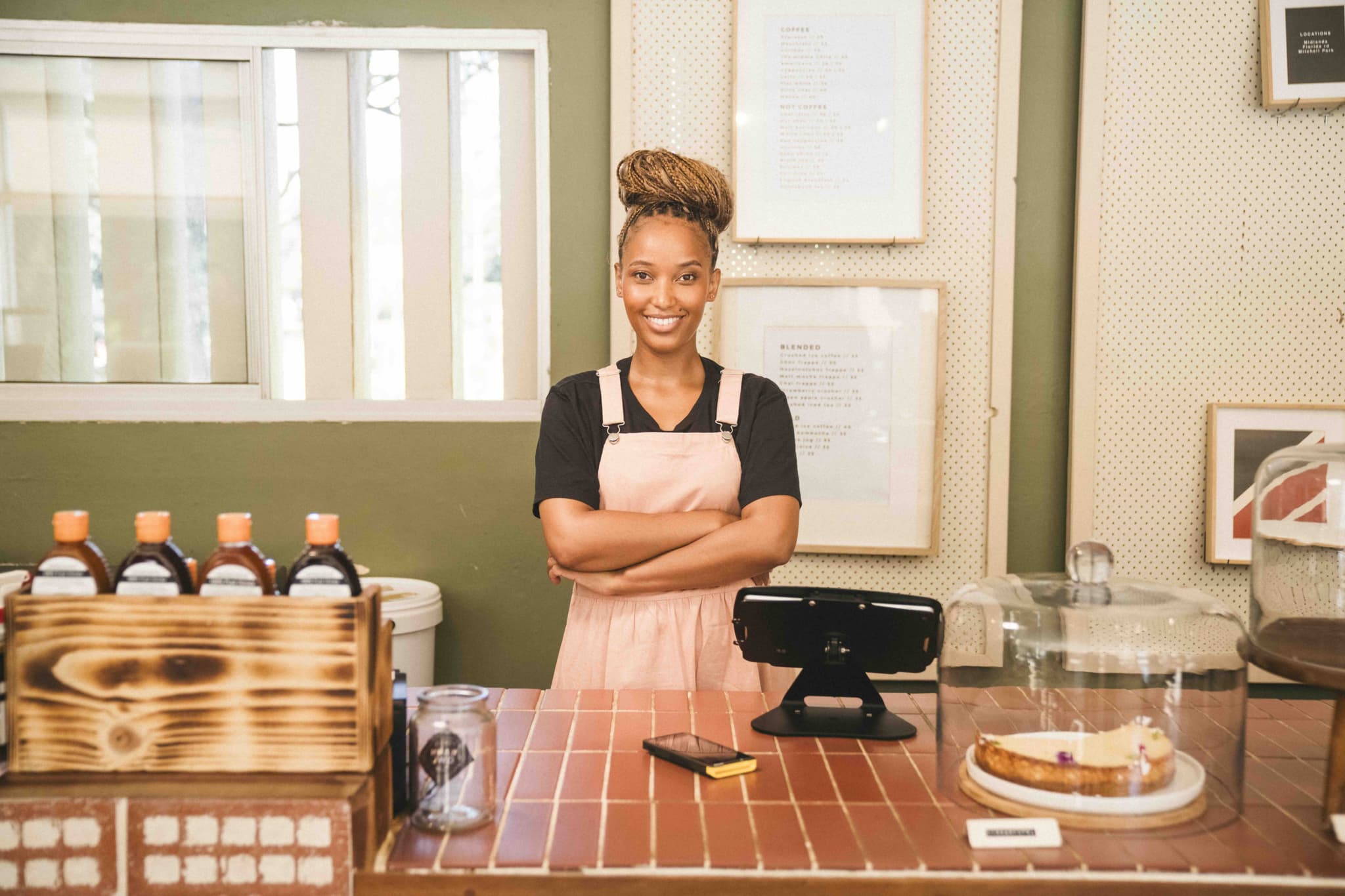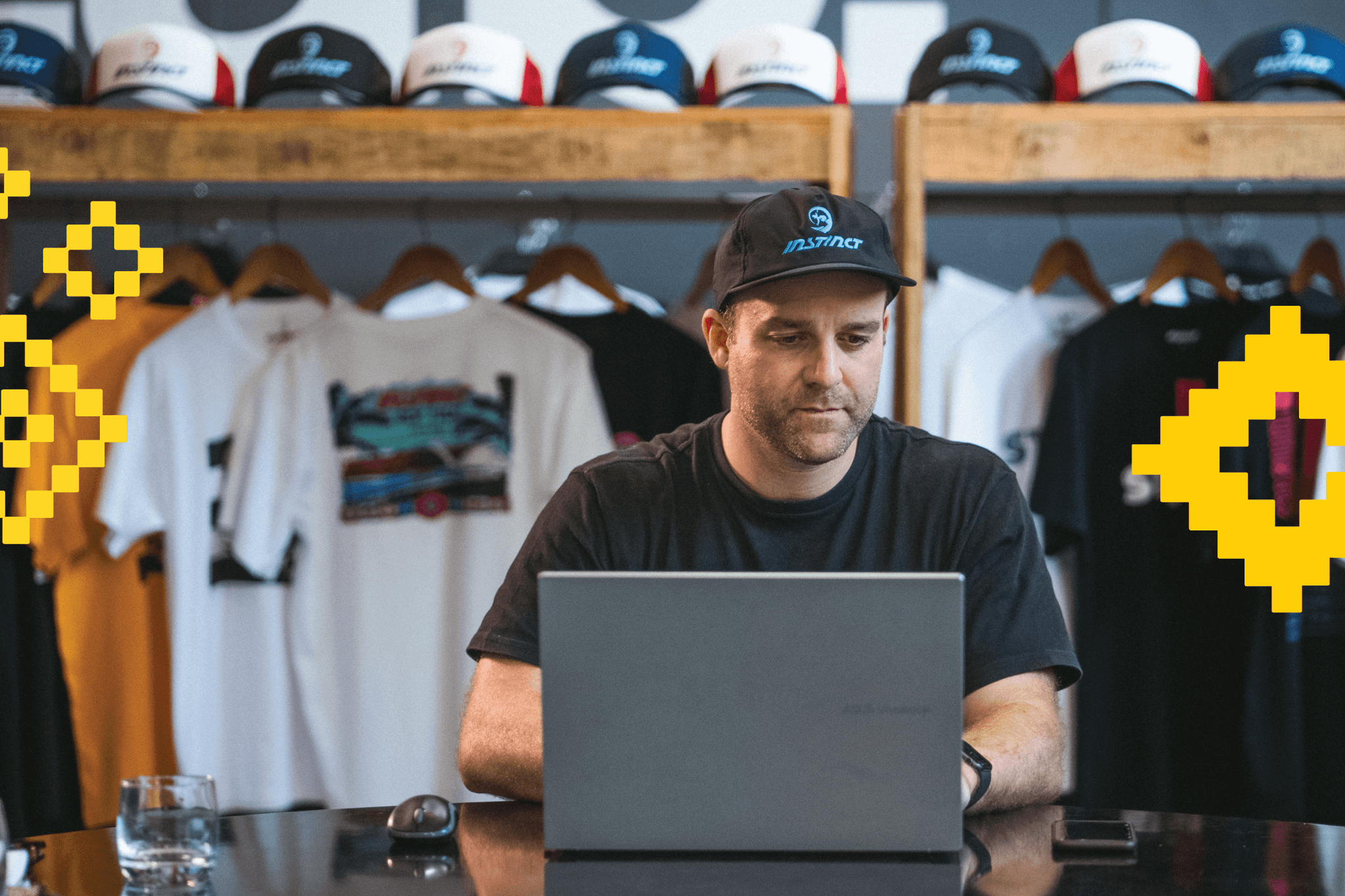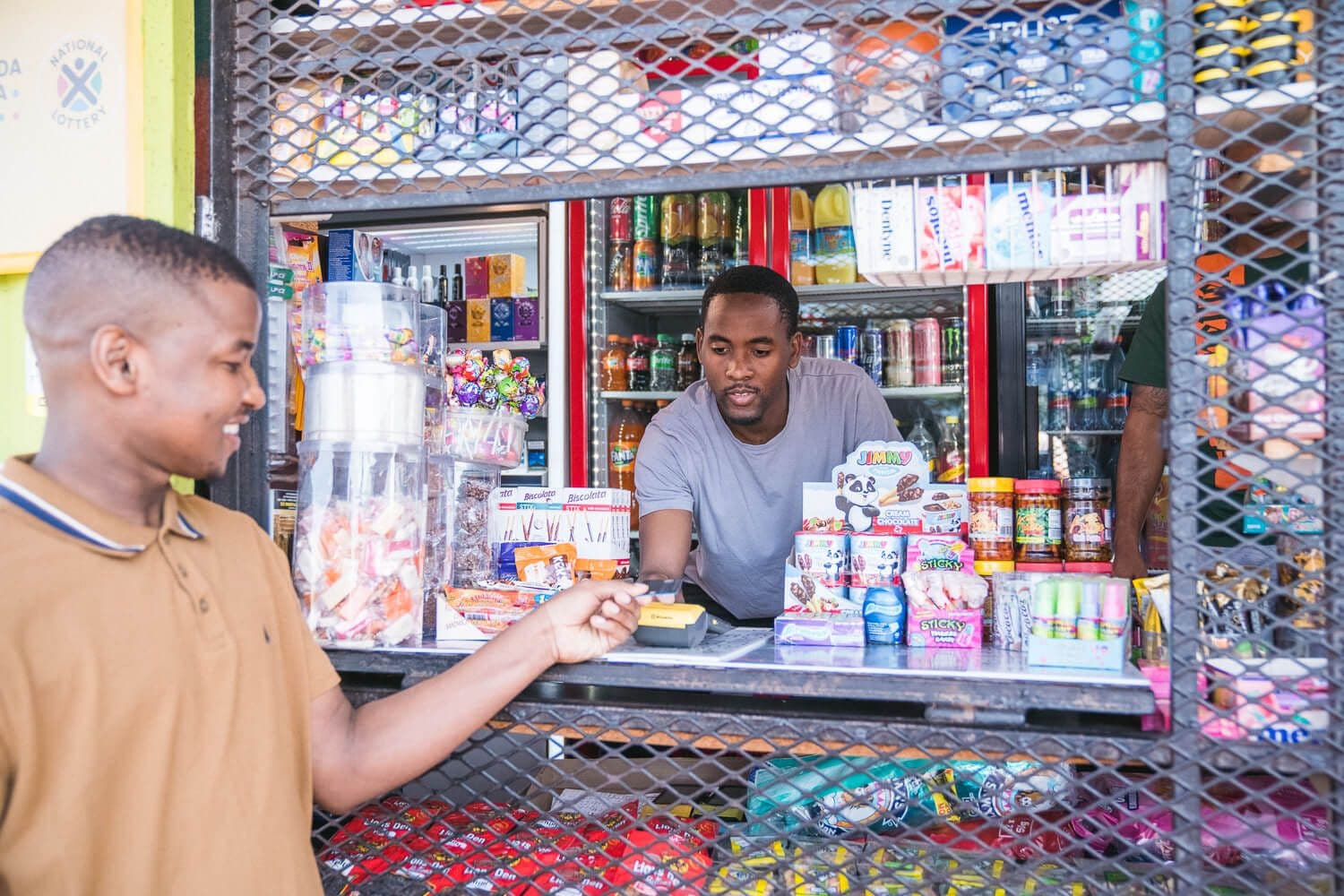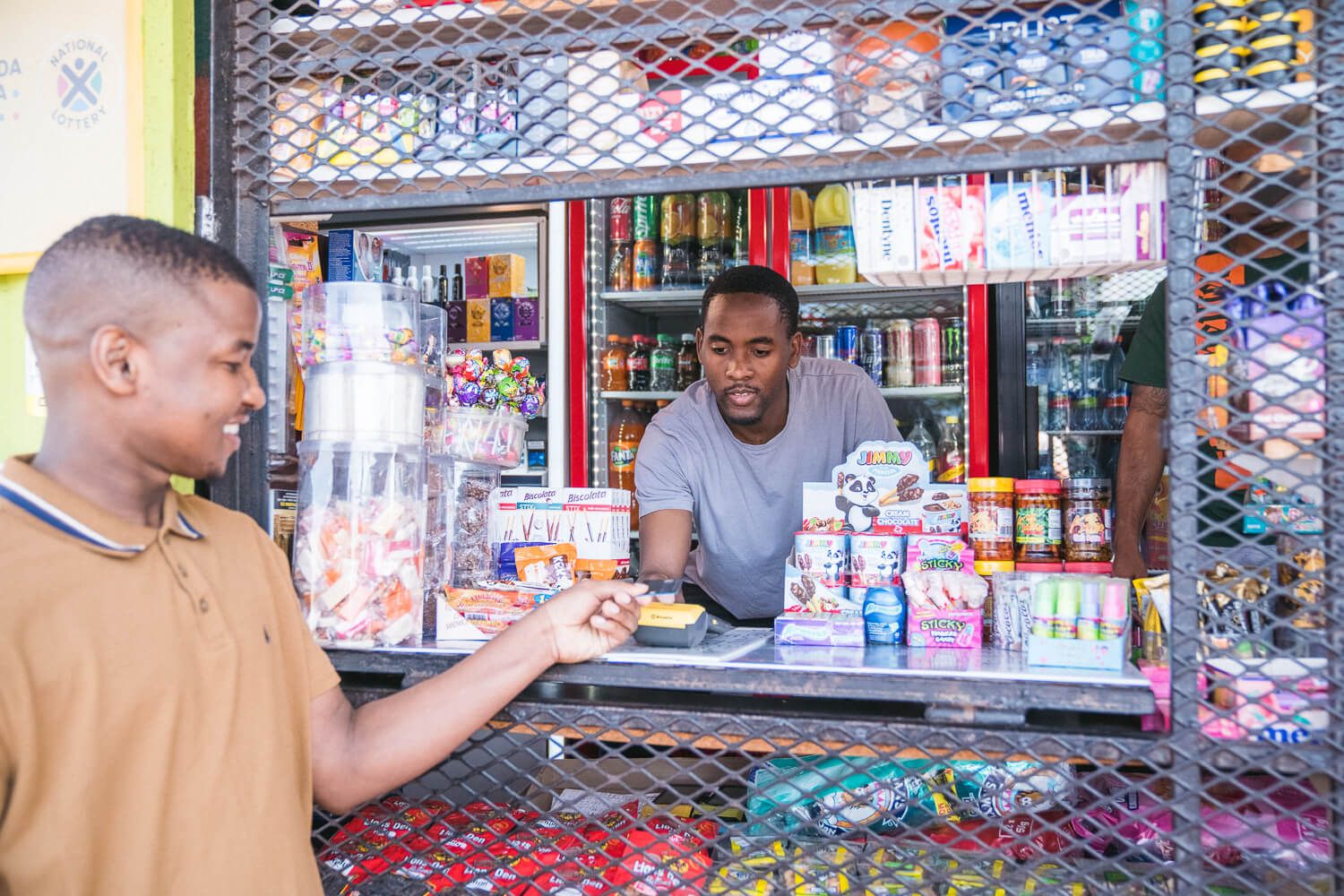
How to Start and Grow a Spaza Shop in South Africa
Learn how to start a spaza shop, stock the right products, accept card payments, and boost daily income with iKhokha’s tools for small business owners.
Table of Contents
- Introduction
- What is a spaza shop?
- How spaza shops contribute to South Africa’s economy
- How to start a spaza shop from home
- What you need to run a successful spaza shop
- How much can a spaza shop make in a day?
- Do spaza shops pay tax in South Africa?
- Common challenges facing spaza shops
- Smart ways to grow your spaza shop
- Why technology is key to a thriving spaza shop
- Our final tips for long-term success
If you’ve ever dreamed of owning a small business that serves your community while creating a stable income, opening a spaza shop might be the move. These neighbourhood convenience stores are more than just places to buy bread and airtime. They’re the heartbeat of South Africa’s informal economy.
Starting a spaza shop can be a smart way to create steady income and build a loyal customer base. But it’s not just about opening the door and hoping for the best. It’s about planning, using the right tools, and making small, consistent moves that keep the shelves stocked and customers happy.
From choosing the right location to picking payment tools that fit your business, here’s your guide to starting, running, and growing a spaza shop that lasts.
What is a spaza shop?
A spaza shop is a small, informal retail store often run from a home, garage or container. These shops provide everyday essentials to people in the local area, offering affordable and accessible alternatives to supermarkets.
Spazas play an important role in township and rural economies. They create local jobs, offer fast service, and save customers money and time compared to bigger stores. Over time, they’ve evolved from basic stalls into smart businesses.
While cash is still common, more owners now accept card payments, track sales through the iKhokha App, and use tools to manage cash flow. This shift makes it easier to compete, stay organised, and grow profits.

How spaza shops contribute to South Africa’s economy
Once you understand what a spaza shop is and how it fits into everyday community life, it becomes clear just how much these stores contribute to the country’s economy. They may look small on the outside, but together they form one of the strongest pillars of South Africa’s informal retail sector.
Recent studies estimate that township and informal retail spending sits at around R170 billion a year, with spaza shops accounting for roughly R90 billion of that total. Because most purchases happen close to home, the money circulates within the neighbourhood, helping families, micro-entrepreneurs and local service providers earn a living.
Spaza shops also support jobs in ways that bigger retailers often can’t. Many owners employ assistants, rely on local delivery drivers and buy stock from smaller distributors, bakeries and wholesalers. This creates a chain of opportunity that keeps income flowing through the community rather than out of it.
There’s also a growing shift toward digitisation. More spaza owners now accept card payments, track their daily sales digitally and use data to make better decisions about stock and pricing. This move toward digital record-keeping strengthens financial visibility, helps reduce losses and improves access to funding options that were previously out of reach.
All of this adds up to a sector that doesn’t just serve customers, but actively strengthens the wider economy through job creation, local spending and better financial participation.
How to start a spaza shop from home
Thinking about starting a spaza shop at home? Many successful shop owners begin right from their front rooms. Here’s what you need:
- Basic setup: Find a secure space for stock and customers. A window counter, table, or steel shelf can do the trick.
- Stock essentials: Start small with high-demand items like bread, milk, snacks, and airtime.
- Legal setup: It’s best to register your business. Read our guide on where to register a company in South Africa for step-by-step help.
- Payment tools: The iK Flyer is perfect for home setups. It’s portable, fast and works even during loadshedding.
- Promotion: Let your community know you’re open. A handwritten sign, WhatsApp messages, or word of mouth goes a long way.
Need help getting going? Consider an iK Cash Advance to fund your first big stock order.
What you need to run a successful spaza shop
Running a successful spaza shop means doing the small things well, every day.
That includes:
- Keeping shelves stocked with the right products
- Charging the correct prices
- Offering reliable payment options
- Knowing what’s selling (and what’s not)
- Reducing errors and speeding up service, especially during busy hours
These may sound simple, but when your shop is busy, juggling these responsibilities can be overwhelming, especially if you're doing everything manually. Having the right tools in place helps you work smarter, not harder.
The iK Flyer is more than just a card machine. It’s your all-in-one sales partner, helping you accept payments, track your spaza shop income, and speed up service. With the built-in Catalogue feature, you can:
- Load your full product list once and keep it saved
- Tap to add items without having to remember prices
- Automatically keep prices and products consistent across your sales
- Categorise items for easy access during peak hours
- Use the search bar to find products instantly
- Spot any uncategorised items so nothing slips through the cracks
And with the built-in Catalogue feature, you don’t need to remember prices or descriptions. Just tap, add, and sell. It simplifies how you manage your products, keeps things consistent across your team, and reduces the time it takes to train new staff.
You can even categorise your products, find them with the search bar, and see what’s uncategorised so nothing slips through the cracks. No matter you’re working alone or with a team, the Catalogue brings calm to the chaos of retail.
How much can a spaza shop make in a day?
It depends on location, stock, and pricing. On average, a small shop can earn anywhere from R500 to R3,000 in daily turnover. High-volume locations can see even more.
While profits vary, good record keeping and smart stock management can help you:
- Avoid waste and deadstock
- Reorder only what sells
- Understand your real margins
- Set clear targets to increase your income month-on-month
- Plan for seasonal surges like month-end or public holidays
Use your iK Dashboard to track your sales over time and spot opportunities to optimise pricing or introduce new products.
Do spaza shops pay tax in South Africa?
Yes, if your shop is registered and earns above the tax threshold, you are expected to file and pay tax like any other business.
To stay on the right side of the law and unlock growth opportunities:
- Register your business with CIPC. Here’s a handy registration guide.
- Make sure you’re keeping clear, easy-to-read records of your income and expenses.
- Use tools like iK Flyer to automatically record transactions and reduce admin.
- Make use of your iK Dashboard to export sales reports for SARS filings.
- Consult with a tax advisor if you're unsure how to register or file returns.
Being registered helps you separate business from personal finances, access funding, and build a credible, long-term operation.
Common challenges facing spaza shops
Every business comes with its own set of challenges, and the spaza shop business is no different. No matter if you’re just starting out or running a busy store, it’s normal to face a few bumps along the way.
Some common issues faced:
- Stock theft
- Cash-only limitations
- Price disputes
- Loadshedding disrupting operations
- Limited access to wholesale pricing or bulk stock
Smart ways to grow your spaza shop
Once your spaza is up and running, the next step is scaling it to meet growing demand. Small changes can lead to big improvements in both revenue and efficiency. Here, we’ll outline practical steps you can take to increase your shop’s performance over time.
Want to take your shop to the next level?
Start with small wins:
- Upsell: Offer deals like "Buy 2 for R10" on snacks
- Expand your product mix: Add electricity, DStv payments or baked goods
- Track performance: Use your iK Dashboard to spot trends and plan smarter buys
- Offer customer accounts or loyalty-based discounts
- Improve service speed with the Catalogue feature in iK Flyer
- Reinvest wisely: Use profits to add shelving, improve signage or extend trading hours
As your customer base grows, so can your range, space and even location. Growth doesn’t have to mean big risks, just smart moves.
Why technology is key to a thriving spaza shop
Running a shop today isn’t only about selling products. It’s about having the tools to work faster, smarter and more confidently. Technology helps spaza owners move from survival mode to sustainability, unlocking new opportunities to grow and compete.
With digital tools like the iK Flyer, you can:
- Accept card payments in-store, on the go, or at home
- Keep track of every sale, no more manual books!
- See your sales performance in real time
- Reduce mistakes and avoid price mix-ups
- Keep your product Catalogue synced across all devices
- Train staff quickly and get them selling in minutes
- Keep your shop running smoothly, even during loadshedding

Our final tips for long-term success
Keeping a neighbourhood shop running well for years comes down to more than effort. You also need to stay organised and keep an eye on what’s changing around you.
If you’re looking to open a local store or improve the one you’re running, it really comes down to focusing on these fundamentals:
- Keep track of everything
- Use tools that save you time
- Stay connected to your customers
- Keep your store stocked with what people actually buy
- Train staff to serve quickly and professionally
- Register your spaza shop and keep records clean
And remember: you don’t have to do it alone. From setup to scale-up, iKhokha is here to support you and your business journey.






